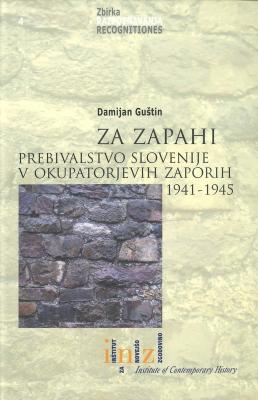Za zapahi: prebivalstvo Slovenije v okupatorjevih zaporih 1941-1945
Keywords:
occupation, prisoners, penal institution, criminal law, historical overviewSynopsis
No other historical period has ever seen such a large percentage of the Slovene population in police or judicial confinement as that between 1941 and 1945, when most of the Slovene territory was under occupation. Repressive measures, such as arrest, detention and confinement, were liberally applied by the occupiers in their attempt to suppress the national resistance movement.
Non-political crime, the rate of which had generally dropped during the Second World War, was of secondary concern to the occupying regime. While the prisons in Slovenia continued to exercise their role in sanctioning crime during the war, many were turned into remand prisons, in order to cope with an ever growing number of detainees who were held there while under investigation, before being deported to transit and concentration camps or their destination of confinement.
After establishing the Ljubljana Province on its occupied territory and swiftly annexing it to Italy on 3 May 1941, the Italian occupier retained the existing penal code and judicial institutions, while introducing some of its own for dealing with cases where one of the parties involved was Italian. Despite the annexation, Italy showed more respect for the Law of War than other two occupiers in Slovenia. It established its own police, with the Slovene police being partly dissolved or individually employed as an auxiliary force. Italy refrained from introducing its own penal code or courts, with the excep- tion of the Military War Court, which used Mussolini’s decree of 3 October 1941 on the use of certain articles of the penal code as its legal basis. In the twenty-one months of operation, until the surrender of Italy, this particular court heard some 13,000 persons, mostly members of the resistance movement. Penal courts, which remained operational, only processed non-political criminal cases.

Published
Print ISSN
License

This work is licensed under a Creative Commons Attribution-NonCommercial-NoDerivatives 4.0 International License.

